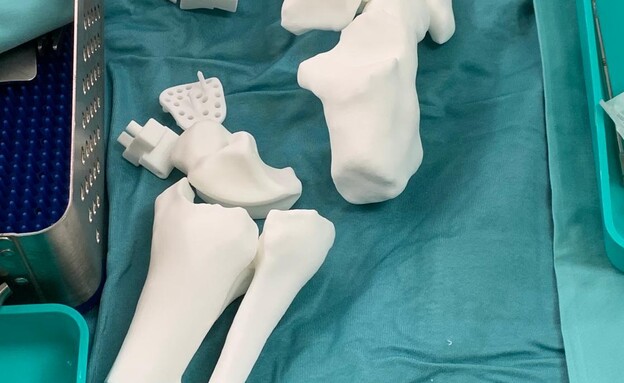In Israel, a professor and his team faced a unique challenge when it came to treating Yuri’s ankle injury. Traditional surgery that replaced the ankle joint with metal parts was not an option for him as his lower bone was completely destroyed. The team needed to think creatively to find a solution.
After exploring various options, they settled on 3D printing the entire joint. This innovative procedure had never been tried in Israel before, but after confirming its feasibility with a laboratory they worked with, they decided to proceed with it.
Ira, Yuri’s companion, supported the decision despite the complexity of the surgery. A complete ankle joint system was printed in 3D in Italy, specifically designed for Yuri based on a CT scan of his ankle. The lower bone was made from titanium using a computer-generated mirror image of his healthy talus bone to ensure accuracy.
In addition to the joint itself, special equipment was printed for the surgery to perfectly fit Yuri’s bone structure, allowing for precise insertion of the implant. The professor highlighted that this surgery was considered innovative globally, with few cases similar to Yuri’s in other parts of the world. Technology advancements have made such complex surgeries possible, ultimately increasing success rates and improving recovery times for patients.
Yuri’s surgery was a success, and he is now anticipating the removal of his cast in four weeks to begin the rehabilitation process. The professor is optimistic that Yuri will regain full function in his ankle and be able to walk unassisted after his recovery. Yuri himself is looking forward to putting his pain behind him and reclaiming his mobility.
Overall, this successful case demonstrates how technology has revolutionized medical procedures and improved patient outcomes by allowing doctors and surgeons to think outside of traditional methods and embrace new innovations that can help save lives and restore mobility to those who need it most.



